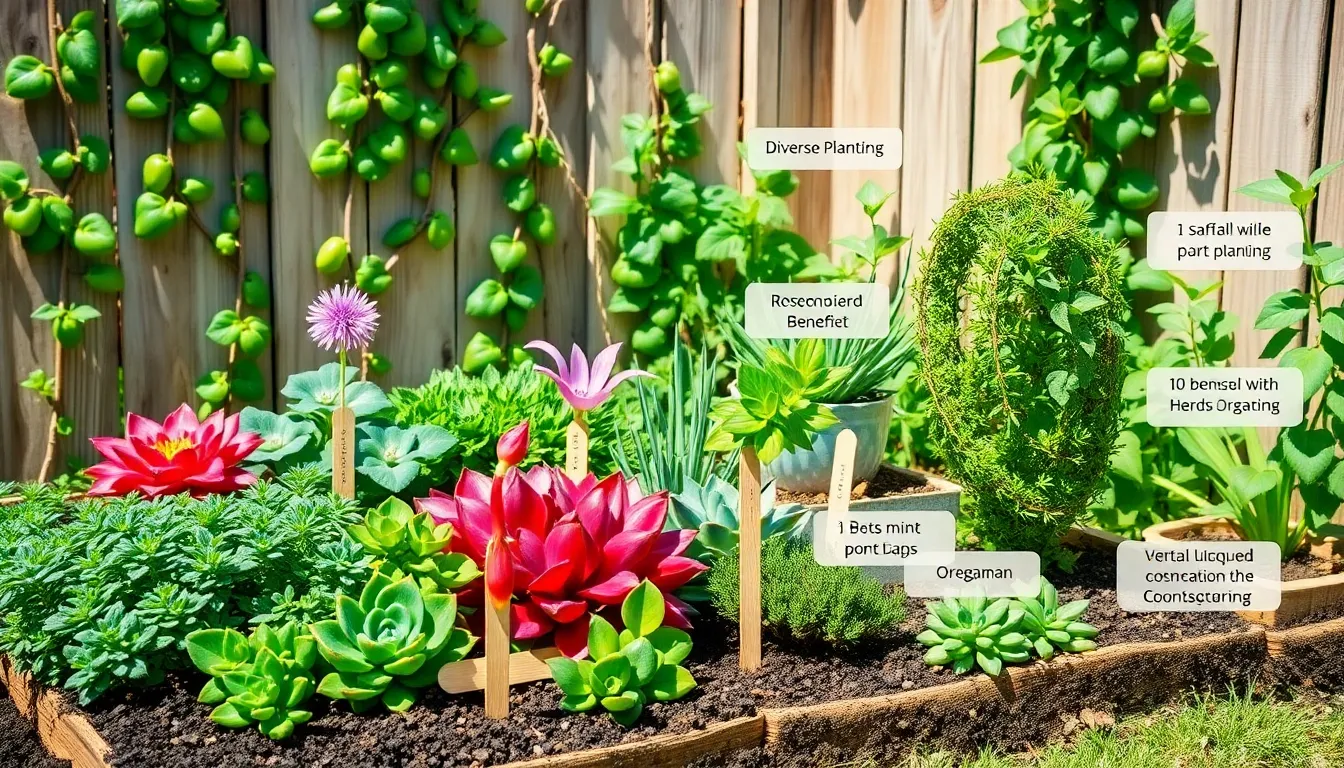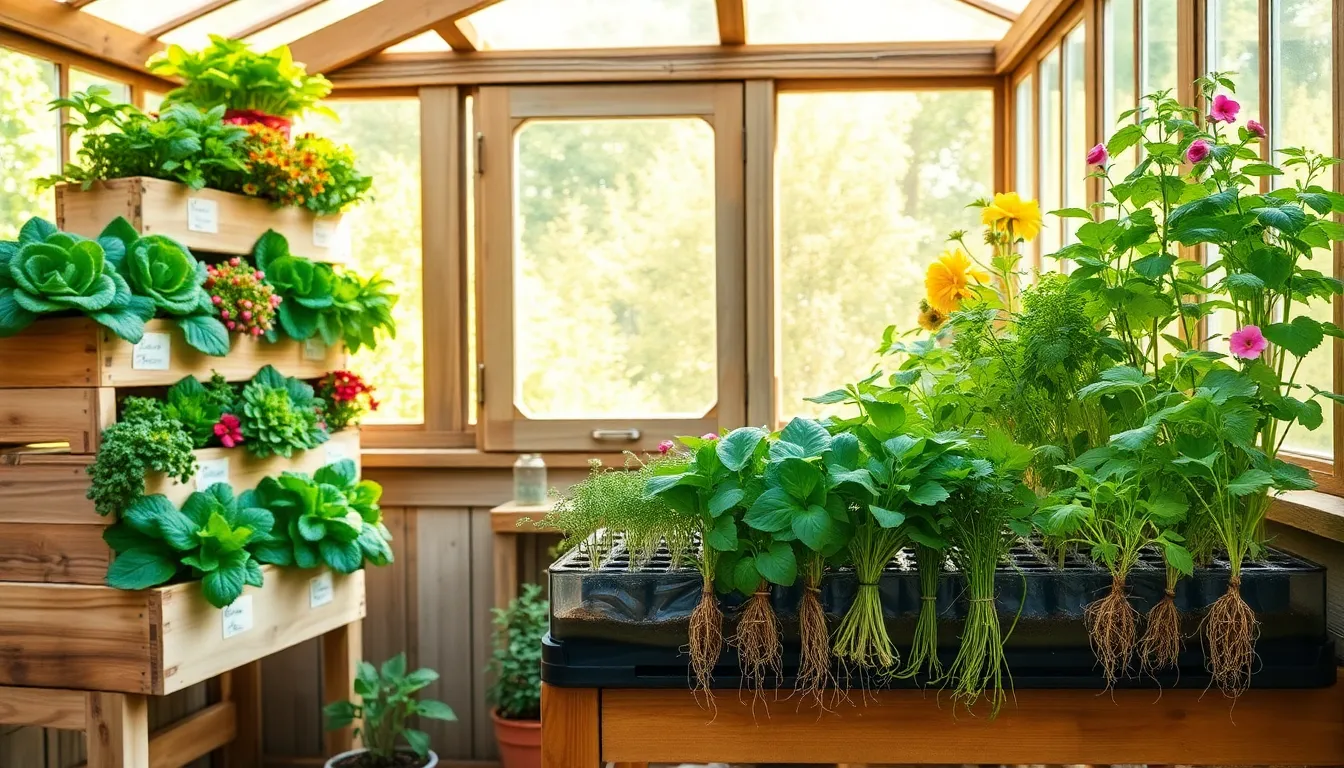Welcome to “13 Unique Organic Gardening Tips,” where the joy of nurturing your garden meets the wisdom of innovative, eco-friendly practices. Whether you’re planting your very first seed or have mastered the art of green thumbs, this guide is crafted to enrich your gardening experience with fresh, sustainable techniques that promise to transform your garden into a thriving oasis.
Within these pages, you’ll uncover a treasure trove of practical advice that goes beyond conventional gardening wisdom. This collection of tips is designed to boost your confidence, ensuring that every plant you tend to flourishes with vitality and vigor. Imagine the satisfaction of harvesting lush, chemical-free produce and witnessing vibrant blooms, all while knowing you’re contributing positively to the environment. By embracing these unique organic methods, you’ll not only enhance the beauty and health of your garden but also enjoy the tranquility and fulfillment that comes from creating a harmonious space teeming with life.
Compost Kitchen Scraps Regularly

Composting kitchen scraps is a simple way to enrich your garden soil with organic matter. Begin by collecting items like vegetable peels, coffee grounds, and eggshells in a compost bin or pile, making sure to avoid meat and dairy products.
Layering is key to a successful compost pile; balance green materials like fruit scraps with brown materials such as dried leaves or shredded newspaper. This balance helps maintain the right moisture and aeration levels, speeding up the decomposition process.
Turn your compost pile regularly using a garden fork to ensure even decomposition and to prevent unpleasant odors. This aeration introduces oxygen, which is essential for the microorganisms that break down the organic matter.
For those with limited space, consider a compact compost tumbler or a worm bin, which are both efficient alternatives. These options can fit in small gardens or even on patios, providing a steady supply of nutrient-rich compost for your plants.
Cultivate Companion Plants Together
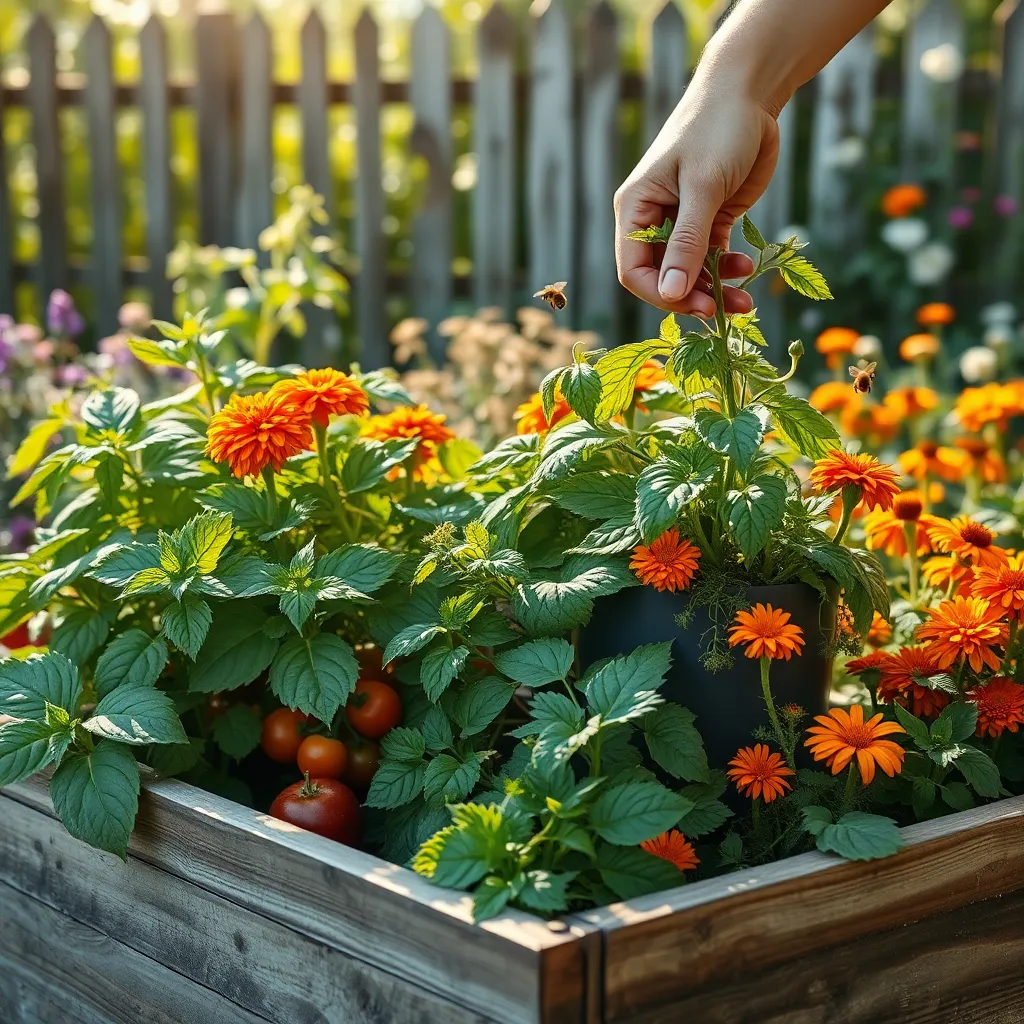
Companion planting is a strategic way to cultivate a thriving garden by pairing plants that mutually benefit each other. By positioning certain plants together, you can naturally deter pests and improve plant growth without the need for synthetic chemicals.
One popular combination is planting tomatoes with basil, as basil can help repel insects that commonly attack tomatoes. Ensure both plants receive full sun and consistent watering, allowing the soil to dry out slightly between waterings to prevent root rot.
For those with limited space, consider growing carrots and onions together, as their distinct scents can help confuse and repel each other’s pests. Use well-draining soil and space seeds according to package instructions to avoid overcrowding, ensuring each plant has enough room to develop.
Advanced gardeners might try interplanting corn, beans, and squash, known as the “Three Sisters” method, which maximizes space and soil nutrients. Corn provides a natural trellis for beans, while squash spreads along the ground, suppressing weeds and maintaining soil moisture.
Rotate Crops to Prevent Pests
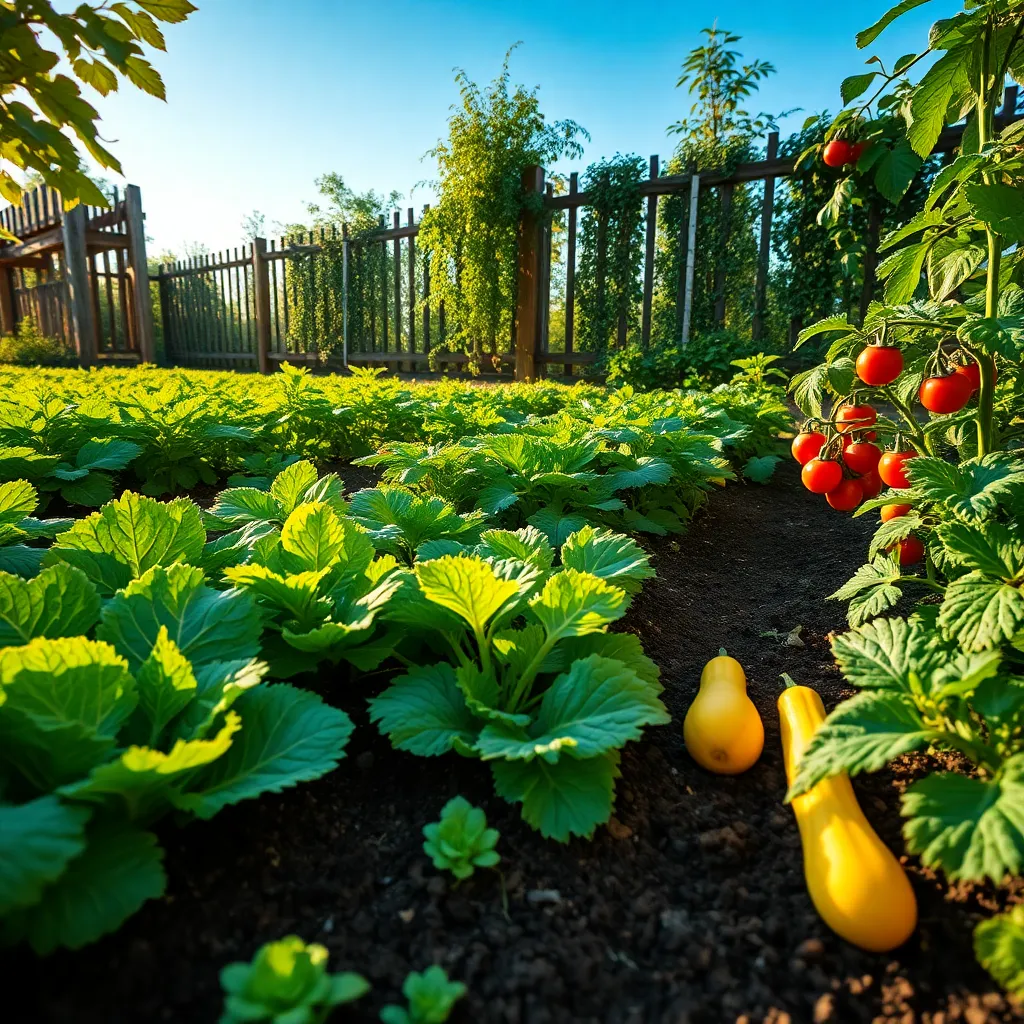
Rotating crops is a powerful strategy in organic gardening to manage pests and diseases. By changing the location of your plant families each growing season, you disrupt the life cycles of pests that target specific plants.
When planning your garden, group plants by family, such as solanaceous vegetables like tomatoes, peppers, and eggplants. Rotate these groups to a different section of your garden each year to reduce pest buildup and soil nutrient depletion.
To implement crop rotation effectively, develop a multi-year plan that considers the nutrient needs of each crop family. For example, follow nitrogen-hungry plants with legumes that naturally replenish soil nitrogen levels.
Advanced gardeners might create a four-year rotation plan that includes root crops, leafy greens, legumes, and fruiting vegetables. This method not only helps with pest control but also improves soil fertility over time, leading to healthier plants.
Use Natural Mulches for Moisture
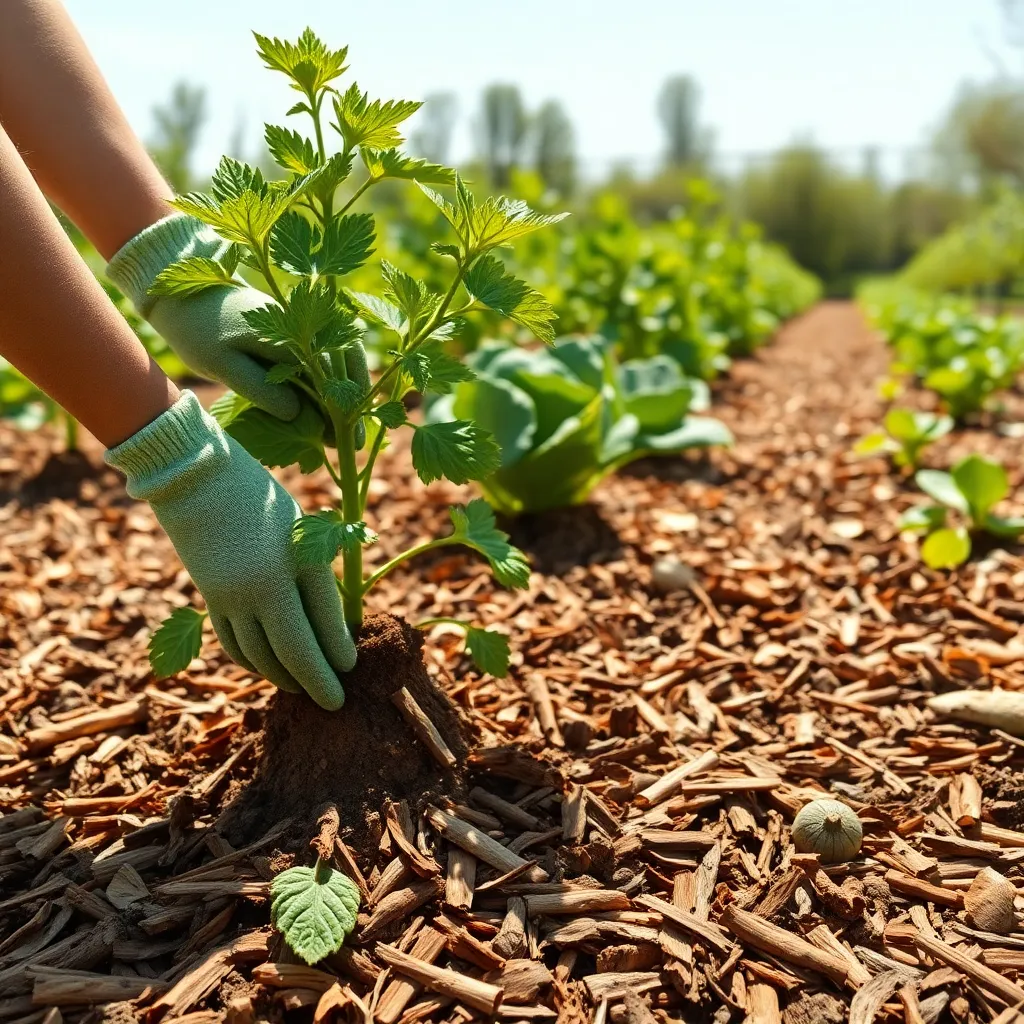
Natural mulches are an excellent tool for maintaining soil moisture, reducing the frequency of watering required. By covering your soil with organic materials like straw, leaves, or grass clippings, you create a barrier that helps retain moisture and keep the soil cool.
In addition to moisture retention, natural mulches can help suppress weeds and improve soil health as they decompose. For best results, apply a layer of mulch about 2 to 3 inches thick, ensuring it’s kept away from the base of plants to prevent any potential rot.
Beginner gardeners can start with simple mulches such as shredded leaves or grass clippings, which are readily available and easy to apply. For those seeking more advanced techniques, consider using composted bark or wood chips, which break down slowly and provide long-term benefits.
Mulching is especially beneficial in regions with hot, dry climates, helping to conserve water and stabilize soil temperature. Be sure to replenish your mulch layer as needed, especially after heavy rainfall or strong winds, to maintain its effectiveness throughout the growing season.
Plant Cover Crops in Off-Season
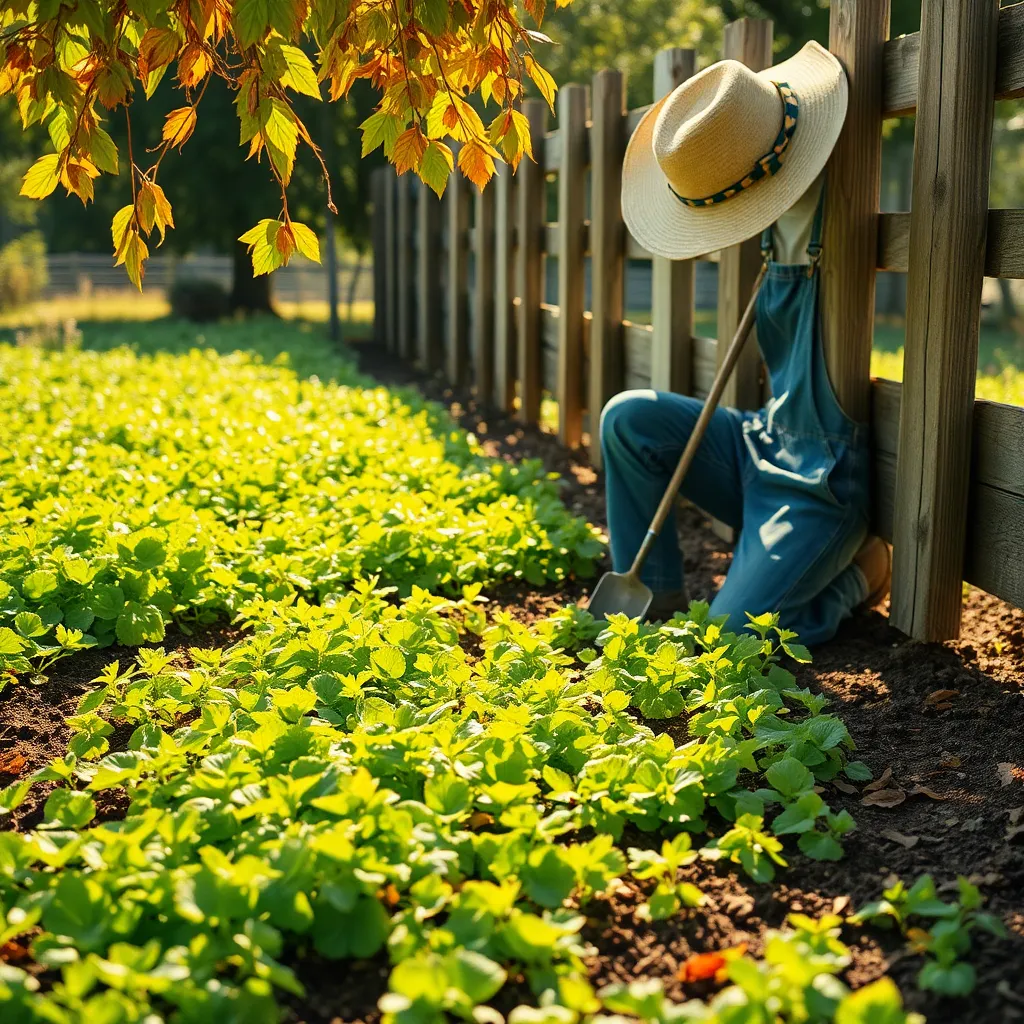
Another effective strategy for organic gardening is to plant cover crops during the off-season. These crops help to enrich the soil, suppress weeds, and prevent erosion, making them a valuable addition to any garden.
Consider planting cover crops such as clover, rye, or vetch, which are excellent for fixing nitrogen in the soil. These plants not only improve soil fertility but also provide organic matter that enhances soil structure.
Before sowing a cover crop, prepare the soil by removing any debris and loosening the top few inches with a rake. Ensure the seeds are spread evenly and lightly rake them into the soil for better contact and germination.
It’s important to water your cover crops regularly, especially during dry spells, to ensure they establish well. Once they have grown, you can cut them down in early spring and incorporate them into the soil for natural fertilization.
Introduce Beneficial Insects Naturally
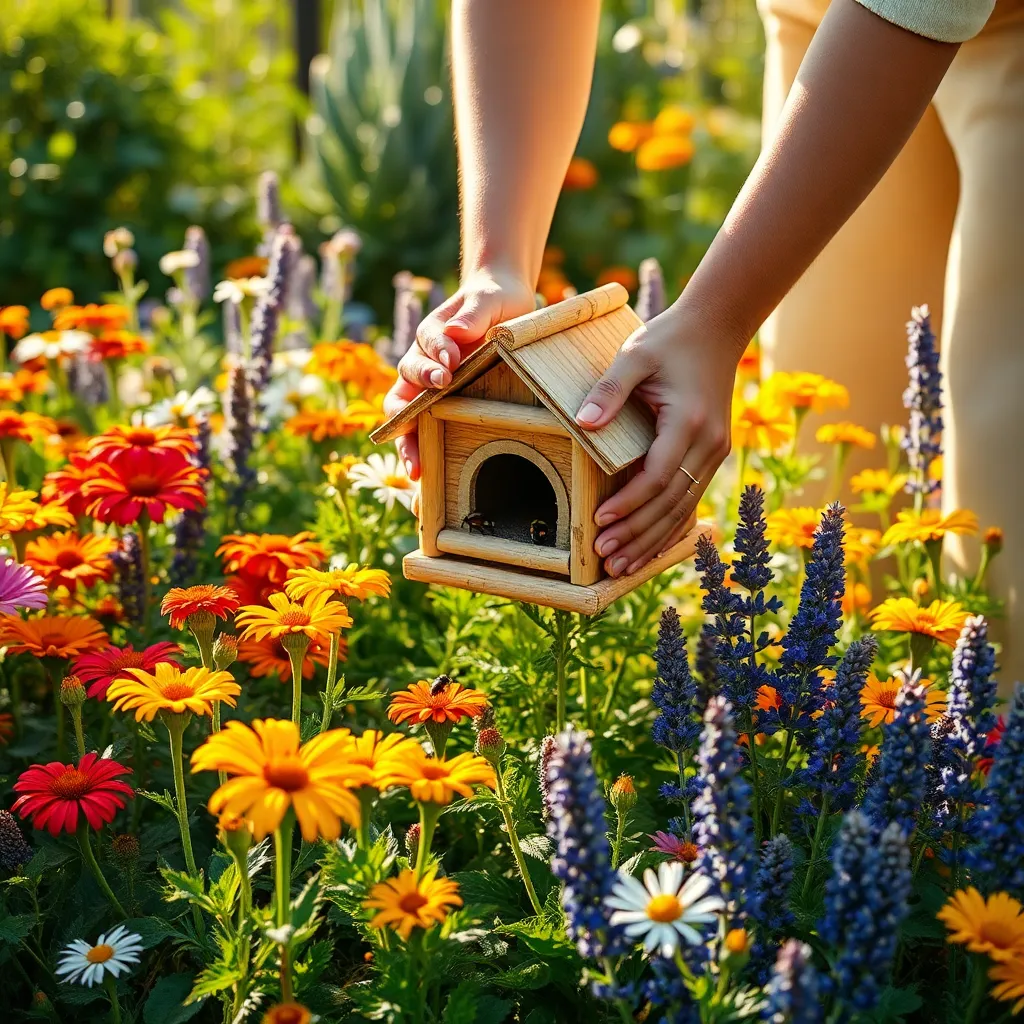
Introducing beneficial insects into your garden can be a game-changer for organic pest control. To attract these helpful creatures, plant a diverse range of flowers like marigolds, yarrow, and dill, which provide both nectar and pollen.
Moreover, creating a small insect hotel with stacked sticks and bamboo can provide a cozy habitat for insects. This simple, low-cost project encourages beneficial species like ladybugs and lacewings to take up residence and help control aphid populations.
Consider leaving a small portion of your garden undisturbed to create a natural haven for these insects. Allowing native plants to thrive in this area will attract a wide variety of pollinators and pest predators, improving your garden’s ecology.
Avoid using pesticides, even organic ones, as they can harm beneficial insects as well as pests. Instead, focus on building healthy soil with compost and mulch, as this promotes a balanced ecosystem where beneficial insects can thrive.
Create Homemade Organic Fertilizers
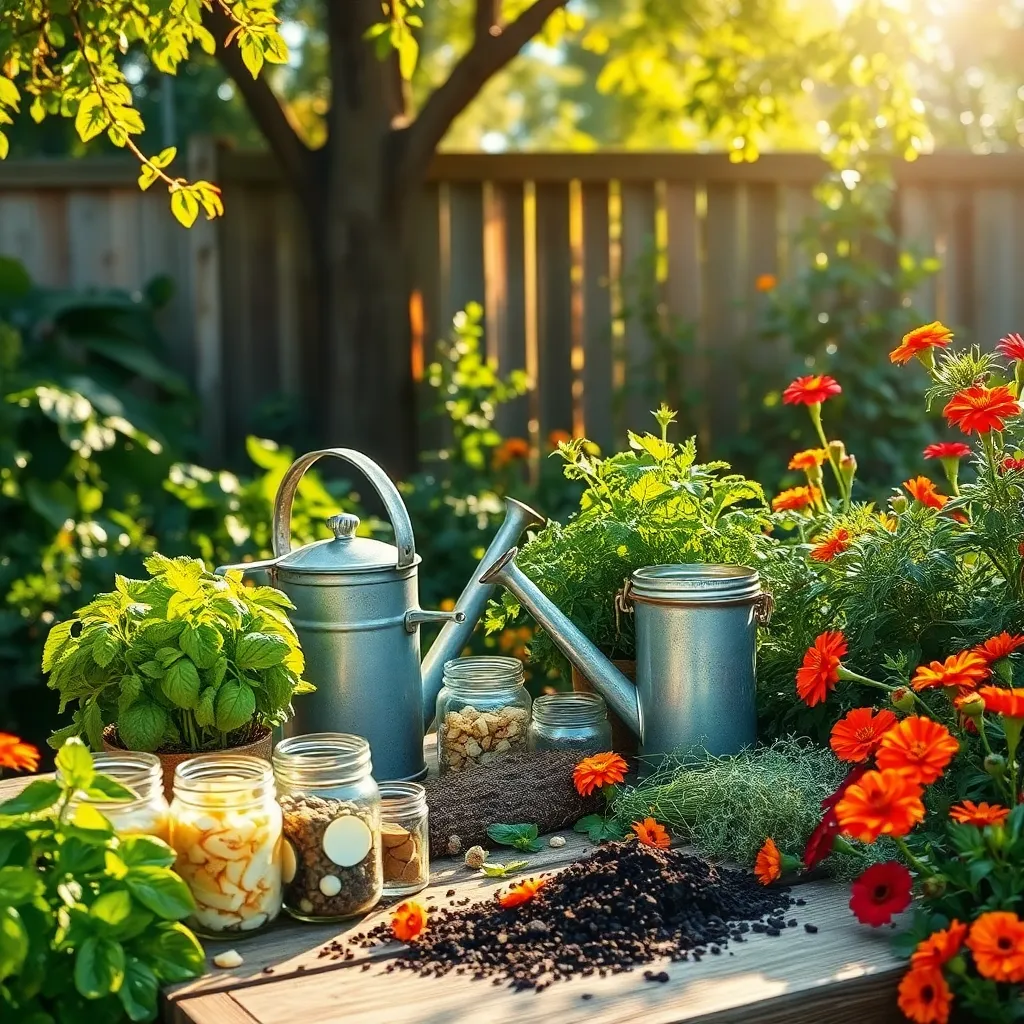
One of the simplest ways to create homemade organic fertilizers is by using kitchen scraps. Collect vegetable peels, coffee grounds, and eggshells to create a nutrient-rich compost that can be added to your garden soil.
For a more specialized fertilizer, try making a nutrient tea from weeds or grass clippings. Soak them in water for a week, then strain the liquid and dilute it with water in a 1:10 ratio before applying it to your plants.
Banana peels are also a fantastic source of potassium, which is essential for plant growth. You can chop them up and bury them directly in the soil or soak them in water for a few days to create a potassium-rich liquid fertilizer.
Advanced gardeners might consider making fish emulsion, an excellent source of nitrogen. Blend fish scraps with water, let it sit for a few weeks to ferment, and then use it on nitrogen-loving plants like leafy greens.
Practice Deep Soaking Irrigation
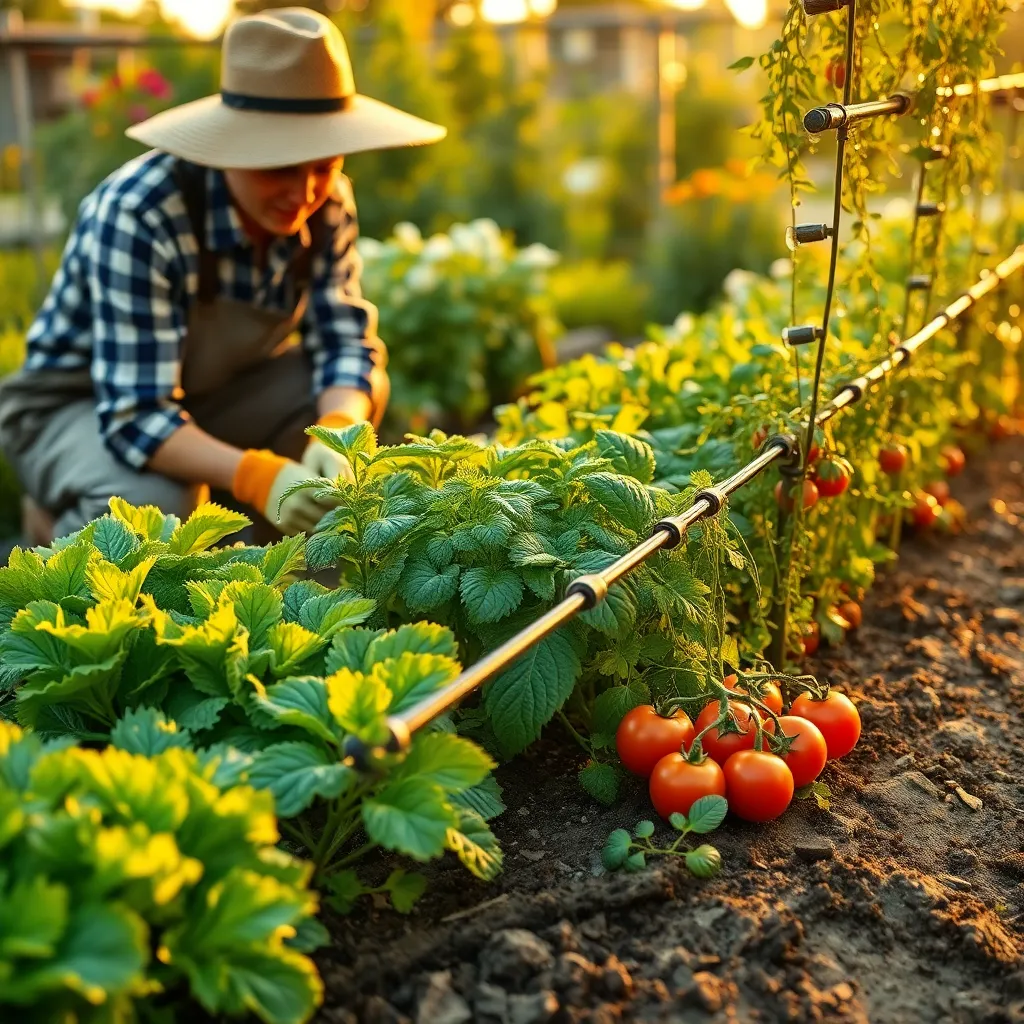
Deep soaking irrigation is a technique that involves watering your plants thoroughly and infrequently. This method encourages roots to grow deeper into the soil, making plants more resilient to drought conditions.
To practice deep soaking, water your garden until the soil is moist at least 6 to 8 inches below the surface. You can measure this by using a garden trowel or a soil probe to check the moisture depth after watering.
For best results, consider watering early in the morning when evaporation rates are low, allowing more water to reach the roots. Aim to use around 1 to 1.5 inches of water per session, adjusting for factors like rainfall and soil type.
Choosing the right soil is crucial for effective deep soaking. Sandy soils drain quickly and may require more frequent watering, while clay soils retain moisture longer and need less frequent deep soaks.
Harvest Rainwater for Irrigation
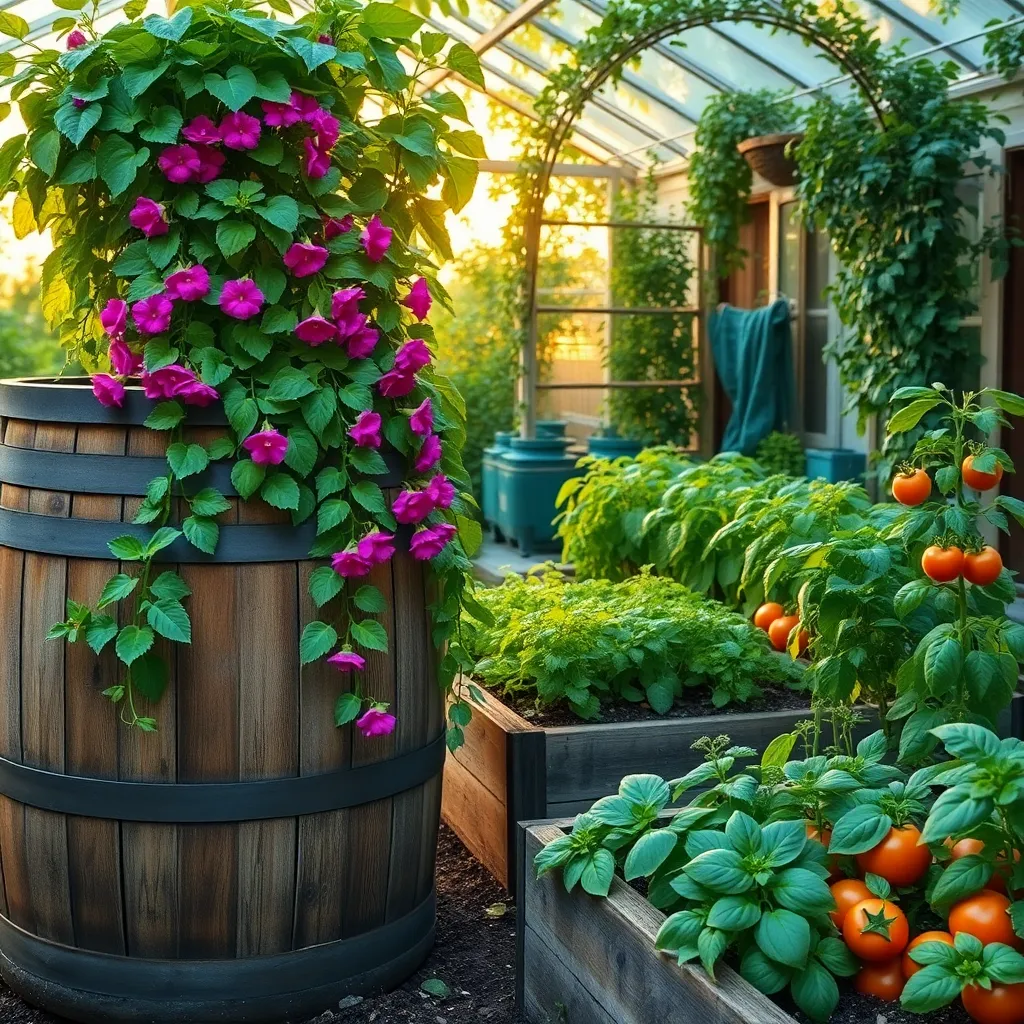
One of the most effective ways to conserve water in your garden is by harvesting rainwater. Installing a rain barrel at the base of your downspouts can collect water that would otherwise be lost, providing you with a sustainable source for garden irrigation.
For beginners, start with a simple setup using a 50-gallon drum, which is both manageable and effective. Ensure the barrel has a secure lid to prevent debris and pests from contaminating your water supply.
Advanced gardeners might consider linking multiple barrels to increase their rainwater storage capacity. By connecting barrels with a hose or pipe, you can effortlessly manage overflow and maximize your water collection efficiency.
Watering your plants with rainwater can significantly benefit them due to its neutral pH and lack of chemical additives like chlorine. Use this valuable resource during dry spells to keep your garden thriving without increasing your water bill.
Grow Native Plants for Biodiversity
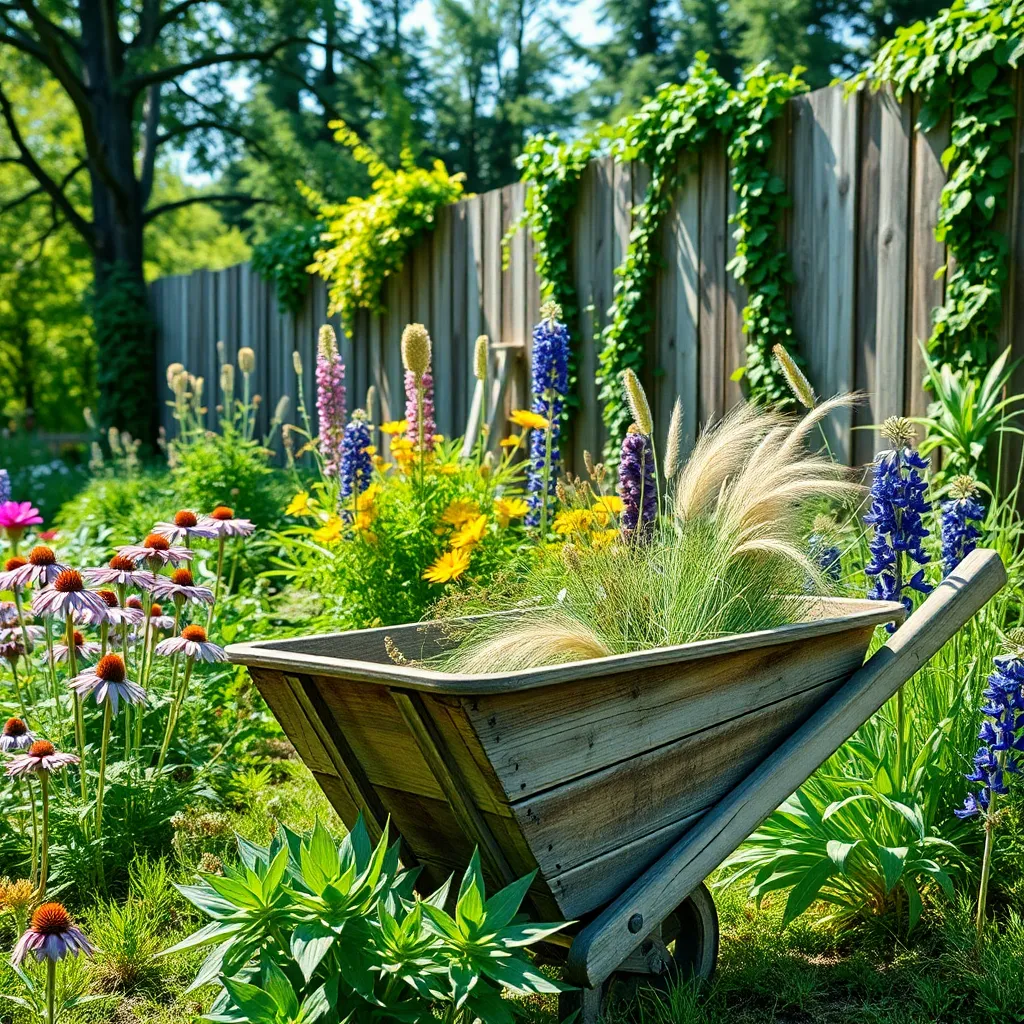
Growing native plants is a fantastic way to enhance biodiversity in your garden and support local ecosystems. These plants are well-adapted to your local climate and soil conditions, making them low-maintenance and resilient choices for gardeners of all levels.
When selecting native plants, consider the specific growing conditions of your garden, such as soil type, sunlight exposure, and moisture level. Many native plants thrive in various settings, from sunny, dry areas to shaded, damp spots, allowing you to create a diverse and vibrant landscape.
Watering native plants often requires less frequency than non-native species, as they are accustomed to your area’s natural rainfall patterns. However, during prolonged dry spells, a deep watering once a week can help maintain their health and vigor.
For beginners, starting with a few easy-to-grow native species like coneflowers, milkweed, or goldenrod can provide a great introduction to native gardening. These plants not only attract pollinators but also offer vibrant colors and textures throughout the growing season.
Advanced gardeners might experiment with creating a native habitat garden that mimics local ecosystems, incorporating a variety of plant types like trees, shrubs, and perennials. This approach not only supports a wider range of wildlife but also enhances the ecological value of your garden.
Incorporate Raised Beds for Drainage
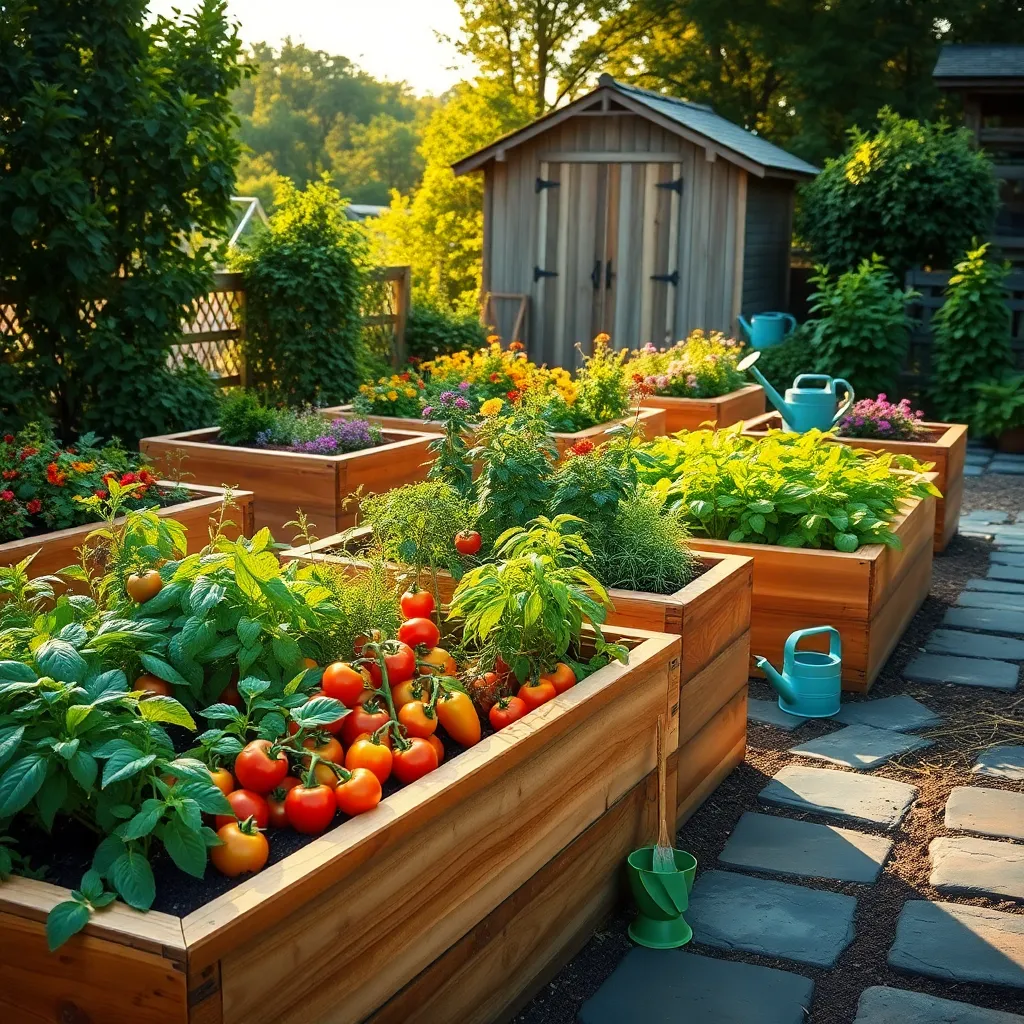
Raised beds can significantly enhance drainage, making them an excellent choice for gardeners dealing with heavy clay or compacted soils. By lifting the soil above ground level, these beds allow excess water to flow away more easily, preventing root rot and other moisture-related issues.
To construct a raised bed, use rot-resistant wood or recycled materials to ensure durability and sustainability. Fill the bed with a mixture of topsoil, compost, and organic matter to create a rich growing environment that retains just the right amount of moisture.
Position your raised beds in a sunny location to maximize plant growth, especially if you plan to grow vegetables that require full sun. Consider the dimensions carefully; a width of 3 to 4 feet allows easy access to the center without stepping on the soil, which can compact it.
Watering needs may differ in raised beds due to improved drainage. Check the soil moisture regularly, and aim to water deeply but less frequently to encourage deep root growth. For advanced gardeners, integrating a drip irrigation system can help maintain consistent moisture levels while conserving water.
Select Heirloom Seeds for Diversity
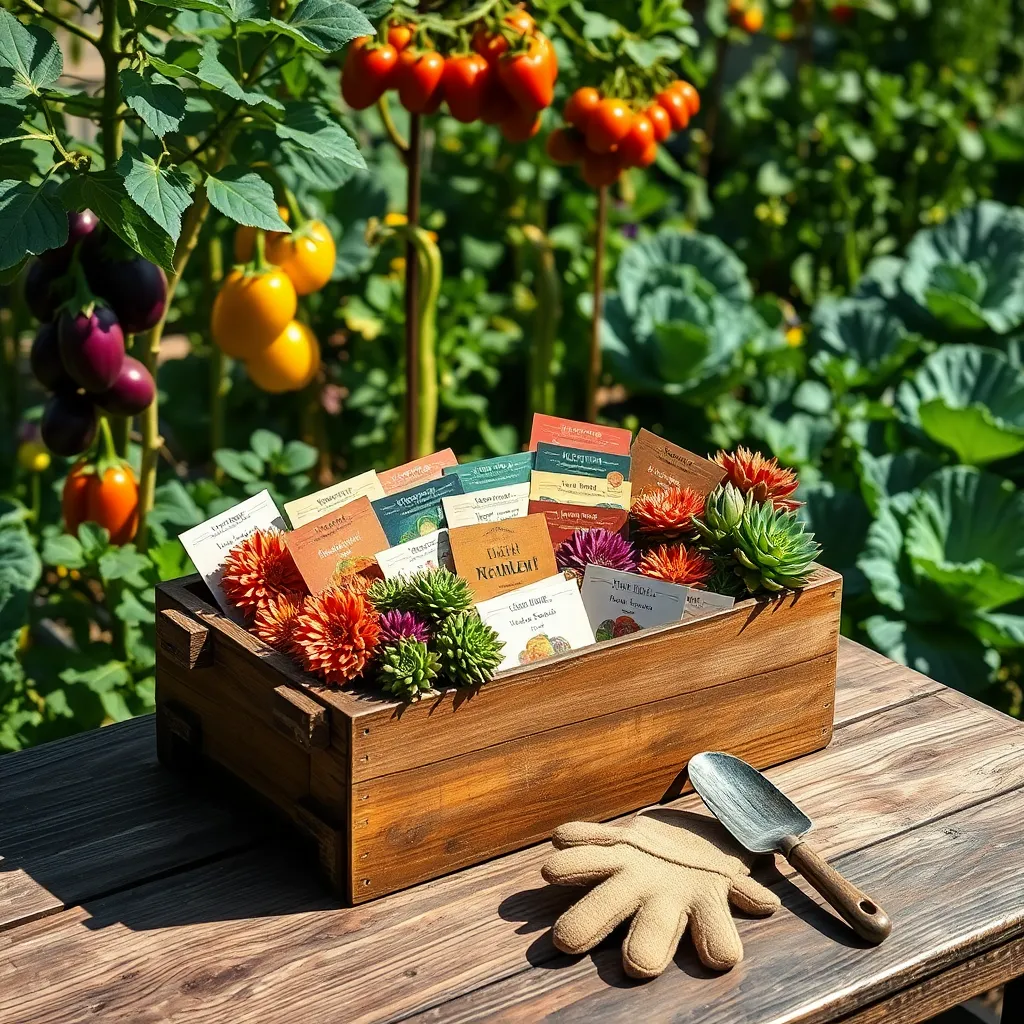
Choosing heirloom seeds is a fantastic way to introduce diversity into your garden. These seeds are open-pollinated, meaning they can be saved and replanted each year, preserving unique plant varieties over generations.
When selecting heirloom seeds, look for varieties that are well-suited to your local climate and soil conditions. Consider your garden’s unique environment, such as sunlight exposure and moisture levels, to ensure the best growth for your chosen plants.
Explore heirloom varieties like the ‘Brandywine’ tomato or ‘Chioggia’ beet for unique flavors and colors. These selections not only enhance your garden’s aesthetic appeal but also offer resilience against pests and diseases due to their genetic diversity.
For beginners, starting with heirloom seeds can be as simple as planting a few new varieties alongside your regular crops. This practice not only diversifies your garden but also helps build a seed bank that can adapt to changing conditions over time.
Apply Epsom Salt Boost Sparingly
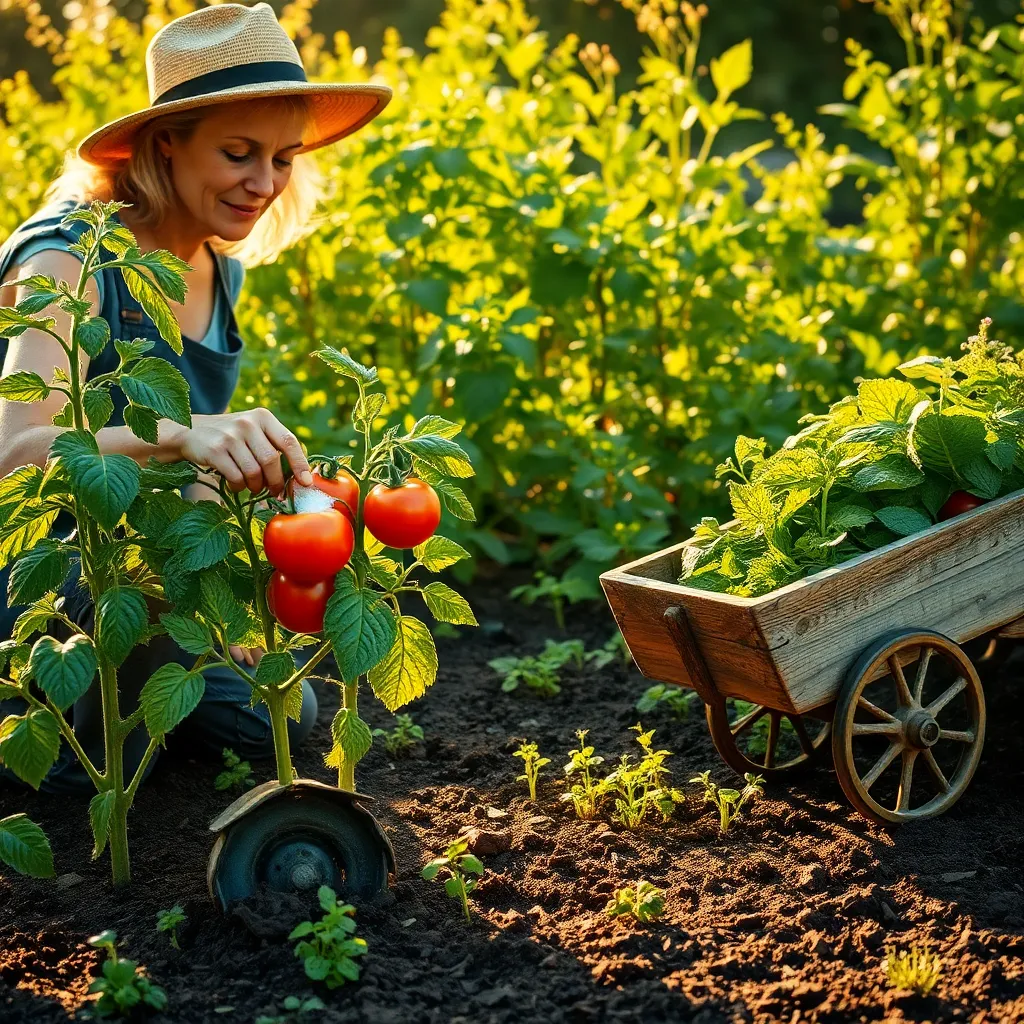
Using Epsom salt in your garden can provide a beneficial boost, but it should be applied with caution. This natural mineral, composed of magnesium and sulfate, can enhance plant growth by improving nutrient uptake and aiding in chlorophyll production.
Before applying Epsom salt, test your soil to determine if magnesium levels are indeed low. Overusing Epsom salt can lead to nutrient imbalances and harm your plants, so moderation is key.
For most plants, a simple application method is to dissolve one tablespoon of Epsom salt in a gallon of water and use it as a foliar spray or soil drench once a month. This is particularly beneficial for tomatoes, peppers, and roses, which thrive with a little extra magnesium boost.
Advanced gardeners can experiment with incorporating Epsom salt into their compost to balance pH levels and increase nutrient availability. Always monitor plant responses closely and adjust your application frequency based on visual cues and growth results.
Conclusion: Growing Success with These Plants
In exploring the 13 unique organic gardening tips, we’ve uncovered a trove of relationship-building concepts, each as vital as the next. From nurturing trust like a delicate seedling to fostering communication akin to enriching the soil, each tip serves as a reminder of the care and attention our relationships require. We’ve learned the importance of understanding, like sunlight, and how patience parallels the time it takes for a garden to flourish. Just as diverse plants support a thriving ecosystem, embracing differences can invigorate our bonds.
To cultivate these lessons in your relationships, start by identifying one concept that resonates with you most and implement it today—whether it be practicing active listening or prioritizing quality time. As you embark on this journey, remember to bookmark this article for easy access to these timeless tips. Let it serve as your guide and reminder of the potential for growth within every connection.
Looking ahead, consider your relationships as gardens of endless possibilities, where consistent care and genuine effort yield the most beautiful results. With each step you take, know that you’re nurturing not just a moment but a lasting legacy of love and understanding. Save this article to revisit these insights and watch your relationships blossom.

